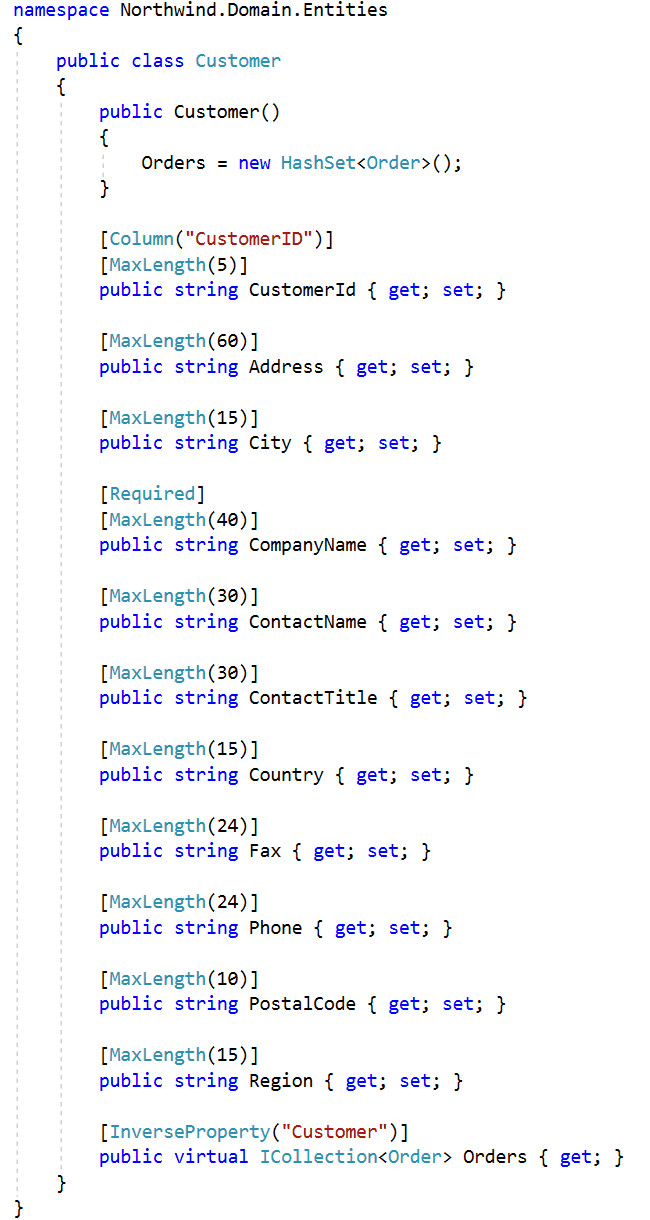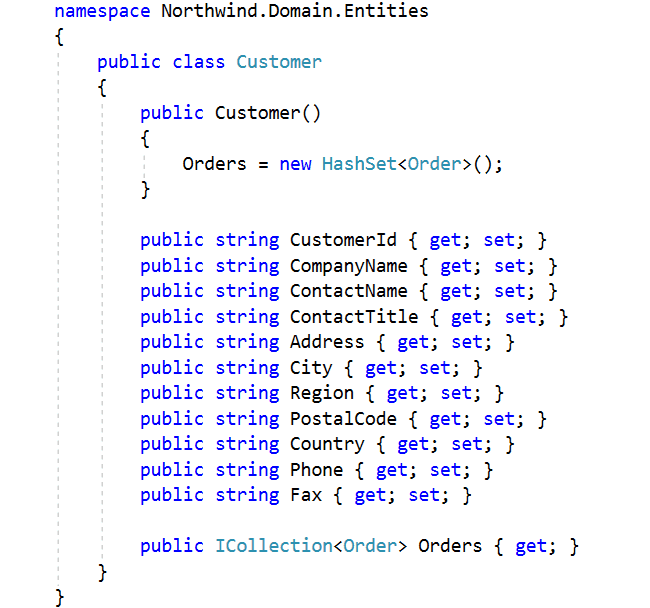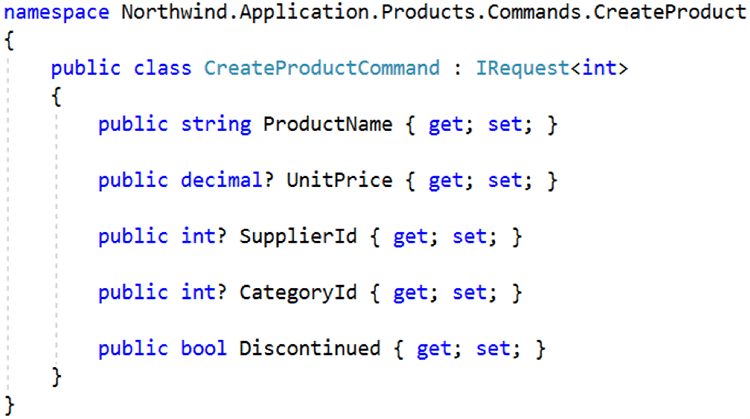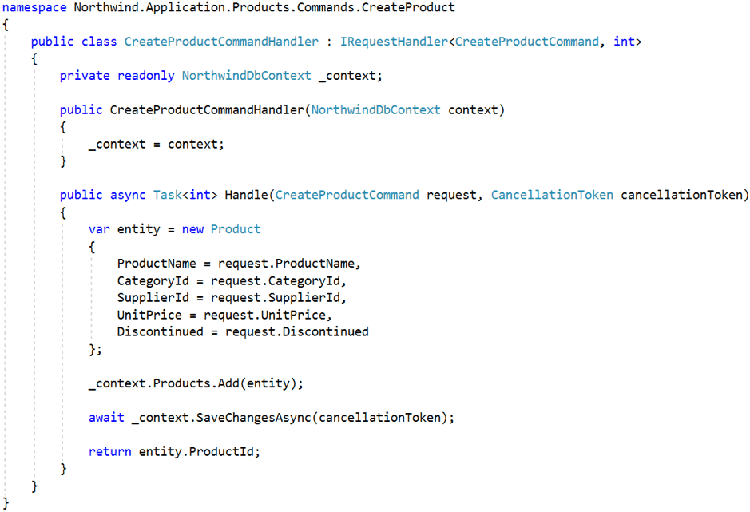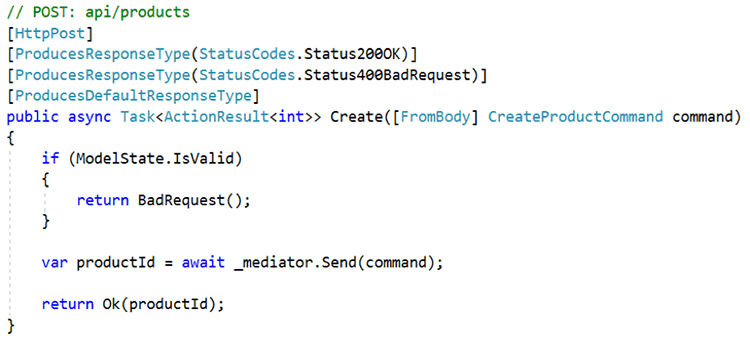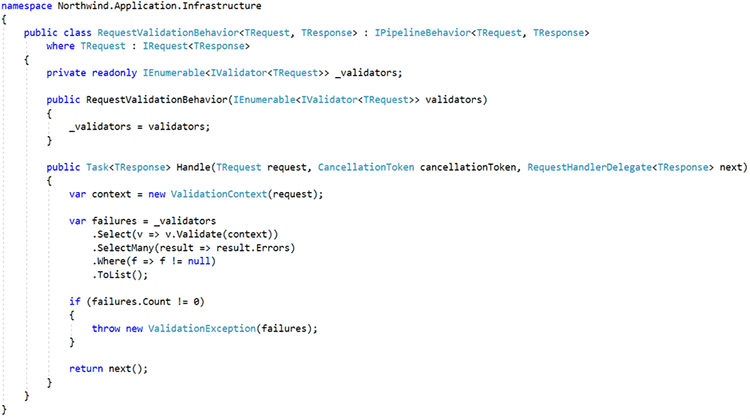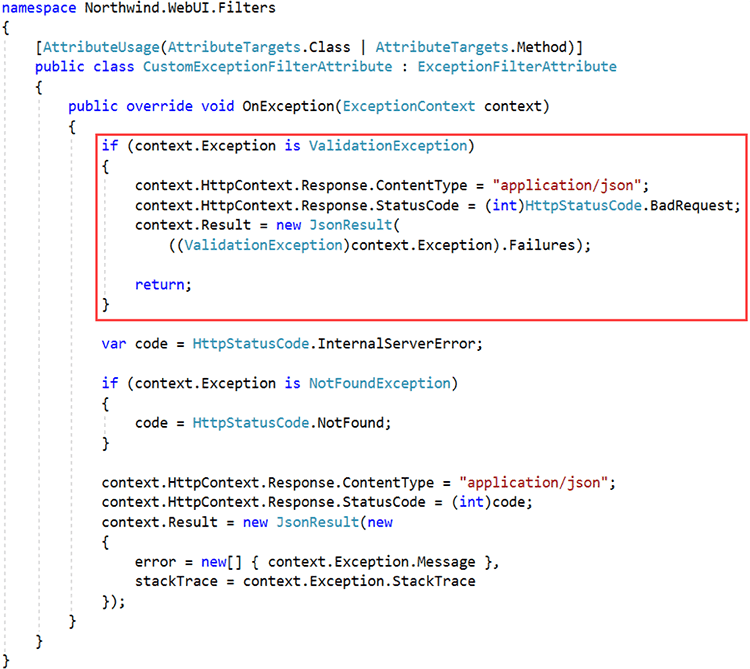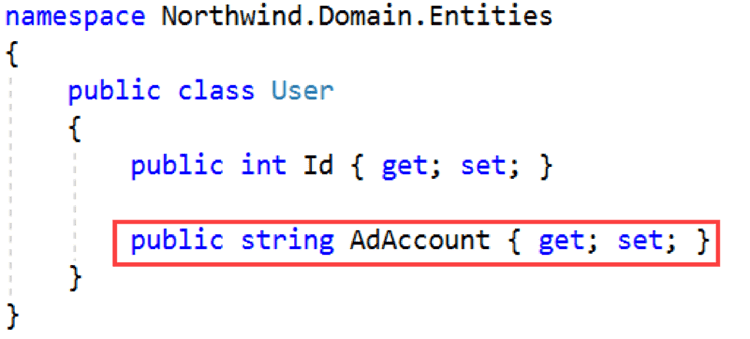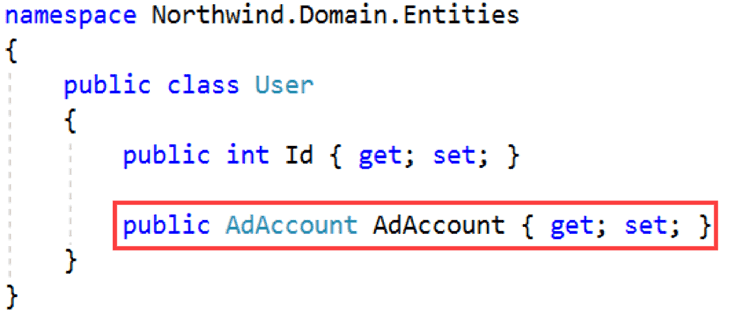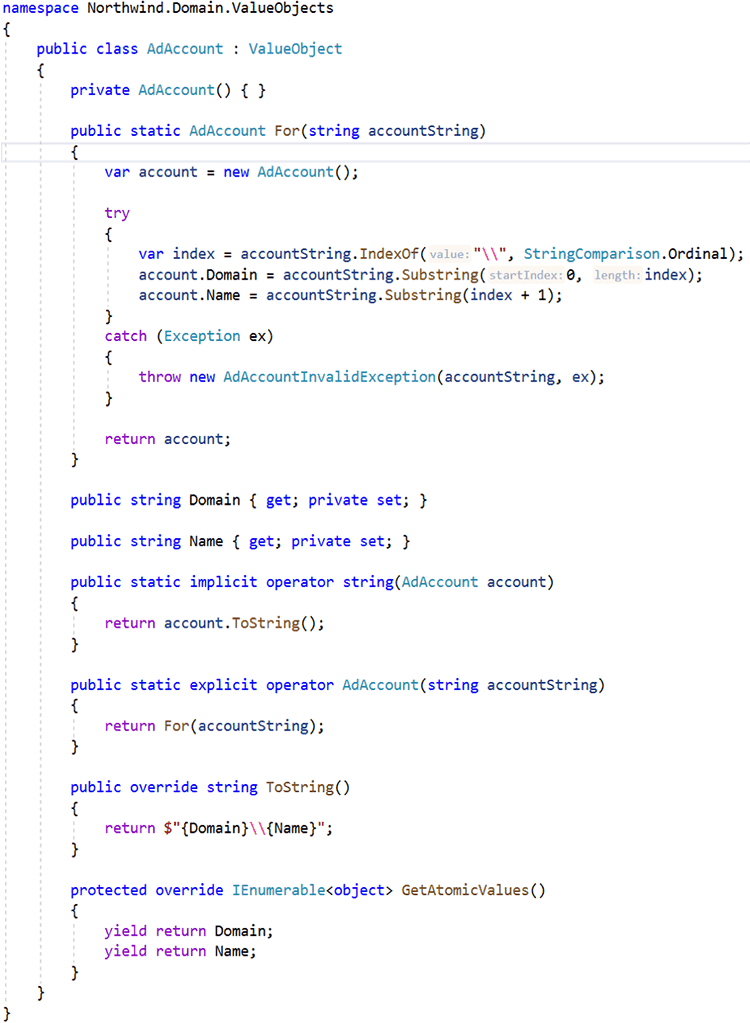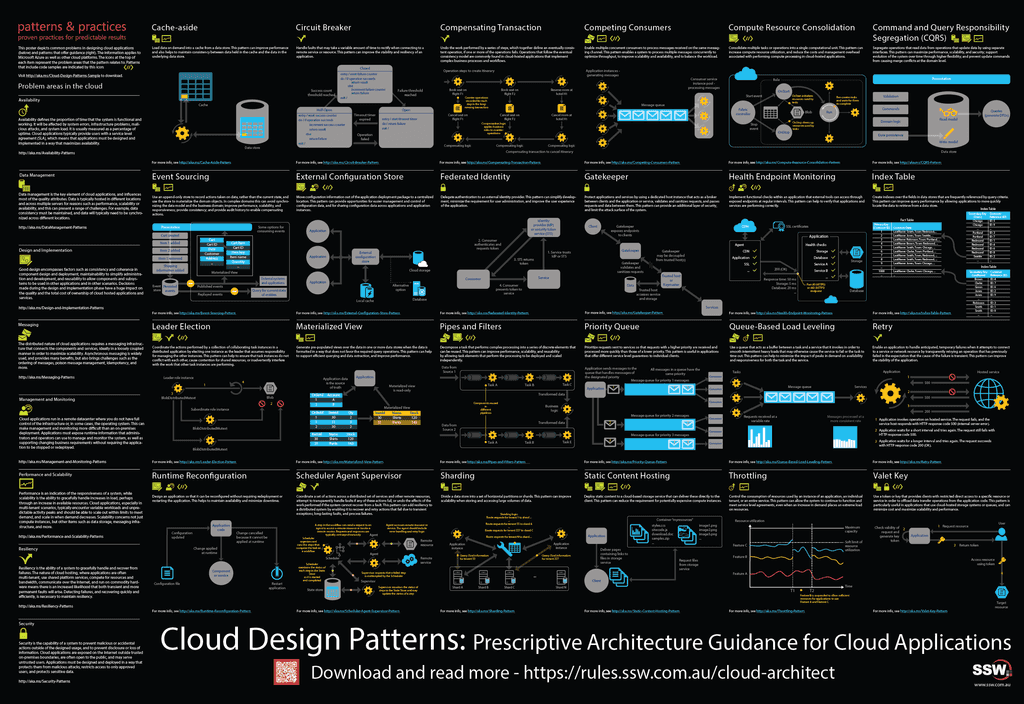Rules to Better Clean Architecture - 12 Rules
SSW implements strict standards on all code produced. Implementing strict coding standards means your code can be easily read, modified, and tested. The Clean Architecture rules aim to have a strong .NET API, as a robust backend is more critical than a front end, whether in Angular, React, Vue, or Blazor.
Want to get more out of your software? Check SSW's Software Audit consulting page.
Clean Architecture is, at its core, about creating a Separation of Concerns, and building it in such a way that it becomes hard to violate this core principle. The outcome of this is to guide teams over time towards the pit of success.
This approach enables the development team to build a system in the same way that follows best practices, without the need for micromanagement. Having Clean Architecture enables changes to have isolated impact, and allows for the system to be easily extended and maintained.
This is the difference between a system that lasts 2 years, and a system that lasts 20 years.
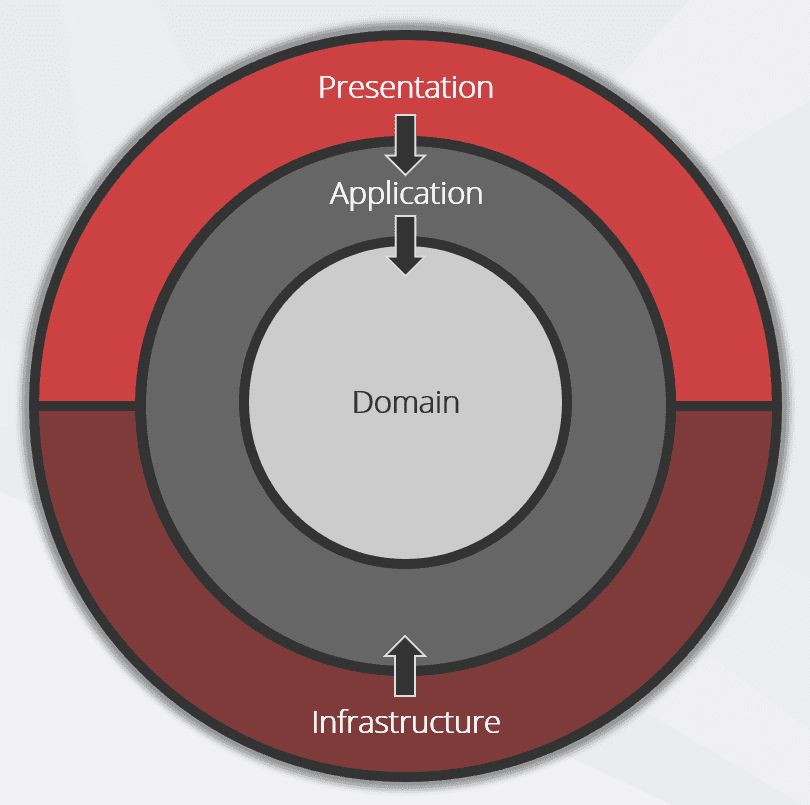
Figure: Onion View of Clean Architecture Instead of having Core (Domain & Application layers) depend on data access and other infrastructure concerns, we invert these dependencies, therefore Infrastructure and Presentation depend on Core. This is achieved by adding abstractions, such as interfaces or abstract base classes, to the Application layer. Layers outside of Core, such as Infrastructure and Persistence, then implement these abstractions.
There are 4 layers to Clean Architecture, and each layer has a specific purpose. The 4 layers are:
Layers
Domain
The Domain layer contains the enterprise logic and types. This layer should not depend on anything outside of itself. This layer typically defines the models and data structures that represent the business entities and concepts.
Examples:
- Entities
- Value Objects (immutable objects that represent a single value or concept)
- Domain Events (something that has happened in the past)
Application
The Application layer contains the business logic and types. This layer is dependent on the Domain layer, but not on anything outside of itself. This layer typically defines the application services that implement the use cases of the system. These services orchestrate the flow of data using the domain entities and types.
The Application layer only depends on abstractions, defined in interfaces, and these interfaces are implemented in outer layers. For example, persistence concerns (such as saving an item to a database) are defined only in terms of requirements; the persistence logic in the Infrastructure layer implements these requirements.
As the Presentation layer is external to Core, the Application layer has no dependency on any presentation concerns.
One example is obtaining information about the HTTP interaction (e.g. the user's ID or other information from an access token). This data is in the HttpContext, which is exposed in the Presentation layer, but not the Application layer. Rather than add a dependency on the Presentation layer, the Application layer can define its abstract requirements in an interface which can be implemented in the Presentation layer.
Examples:
- Application Services
- Use Cases/Features
- DTOs
Infrastructure
The Infrastructure layer is where the external systems are interacted with. For example, you might setup a library to wrap a third party Web API, database, or identity provider. This layer is dependent on the Application Core. This layer defines the implementation of the abstractions defined in the Application layer.
This layer is important for keeping our application clean and testable. For general unit testing this layer is the one that is mocked out the most - therefore interfaces should make sense and be easy to mock.
Examples:
- Persistence
- Wrappers for interacting with External APIs
- Email/SMS
- Logging
- Authentication Provider
Presentation
The Presentation layer is where the system is interacted with. This might be via a Web API, a GUI, or a CLI.
This layer is dependent on the Application layer & the Infrastructure layer.
The Presentation layer's sole responsibility is to interface with the means of external interaction and the Application Core. This layer should not contain any business logic, and should not be dependent on any external items.
The most common use case is a Web API - and it's implementation should define the API routes, its input & output models, using HTTP or other web protocols. The API should then call the Application layer, and either return an Application DTO or map to a Presentation ViewModel if required.
Principles
To achieve the this layering and separation of concerns, we need to follow some principles.
To allow for the separation of concerns, we need to follow the Dependency Inversion Principle (DIP). This principle states that high-level modules should not depend on low-level modules. Both should depend on abstractions. Abstractions should not depend on details. Details should depend on abstractions.
What this means is that the Application Core should not depend on anything outside of itself - and we use interfaces in the Application or Infrastructure layer to achieve this.
Bad Example: Application Depends on Infrastructure, for example relying on a concrete implementation, instead of allowing an interface.Good Example: Repository Pattern, where the Application layer depends on an interface, and the Infrastructure layer implements the interface.
With this design, all dependencies must flow inwards. Core has no dependencies on any outside layers. Infrastructure, Persistence, and Presentation depend on Core, but not on one another.
Benefits
This results in an architecture and design that is:
- Independent of Frameworks - Core should not be dependent on external frameworks such as Entity Framework
- Testable - The logic within Core can be tested independently of anything external, such as UI, databases, servers. Without external dependencies, the tests are very simple to write.
- Independent of UI - It is easy to swap out the Web UI for a Console UI, or Angular for Vue. Logic is contained within Core, so changing the UI will not impact logic.
- Independent of Database - Initially you might choose SQL Server or Oracle, but soon we will all be switching to Cosmos DB
- Independent of any external agency - Core simply doesn't know anything about the outside world
While the design in the above figure only includes three circles, you may need more - just think of this as a starting point.
References
There are many great resources for learning the principles of Clean Architecture, but a the best place to start is with Jason Taylor’s video:
Figure: Clean Architecture with ASP.NET Core 3.0 (Recommended)
Figure: Clean Architecture with ASP.NET Core 2.1 To read further, start with Robert C Martin’s blog post: The Clean Architecture.
Then, check out these books:
This book by Robert C. Martin (aka ‘Uncle Bob’) should be anyone’s starting point for reading further.
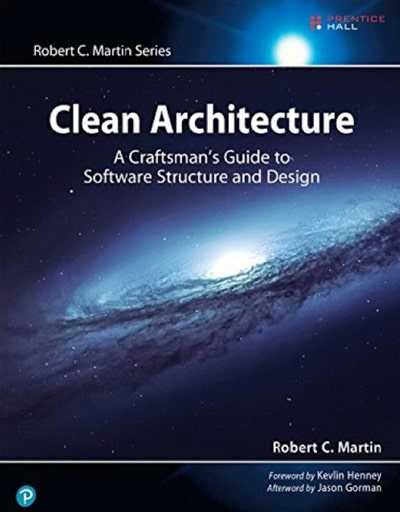
Figure: Clean Architecture: A Craftsman's Guide to Software Structure and Design This resource by Steve Smith is available as an online e-book and contains up-to-date specific examples for ASP.NET Core and Azure.
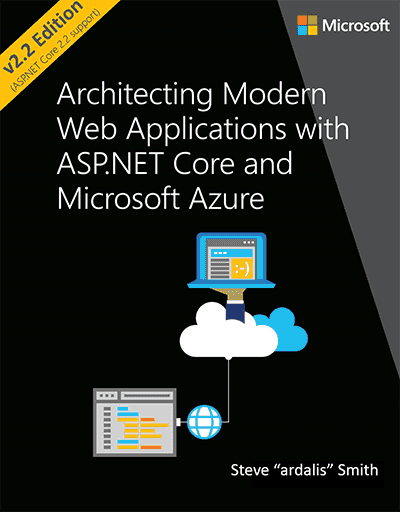
Figure: Architecting Modern Web Applications with ASP.NET Core and Microsoft Azure If you're building applications based on .NET Core then the Clean Architecture Solution Template is the best way to get started.

Figure: The Clean Architecture Solution Template by @JasonTaylorDev The template is designed for creating a Single Page App (SPA) with Angular and ASP.NET Core, but it can easily be used for other .NET Core applications. Create a new project based on this template by visiting https://github.com/jasontaylordev/CleanArchitecture/ and clicking Use this template or by installing the .NET Core Project Template package. To do so, follow these steps:
- Install the latest .NET Core SDK
- Install the latest Node.js LTS
- Run dotnet new --install Clean.Architecture.Solution.Template to install the project template
- Create a folder for your solution and cd into it (the template will use it as project name)
- Run dotnet new ca-sln to create a new project
- Navigate to src/WebUI and run dotnet run to launch the project
If you would like to learn more, review the following blog post: Clean Architecture with .NET Core: Getting Started.
The domain layer should be independent of data access concerns. The domain layer should only change when something within the domain changes, not when the data access technology changes. Doing so ensures that the system will be easier to maintain well into the future since changes to data access technologies won't impact the domain, and vice versa.
This is often a problem when building systems that leverage Entity Framework, as it's common for data annotations to be added to the domain model. Data annotations, such as the Required or MinLength attributes, support validation and help Entity Framework to map objects into the relational model. In the next example, data annotations are used within the domain model:
As you can see in the above example, the domain is cluttered with data annotations. If the data access technology changes, we will likely need to change all entities as all entities will have data annotations. In the following example, we will remove the data annotations from the entity and instead use a special configuration type:
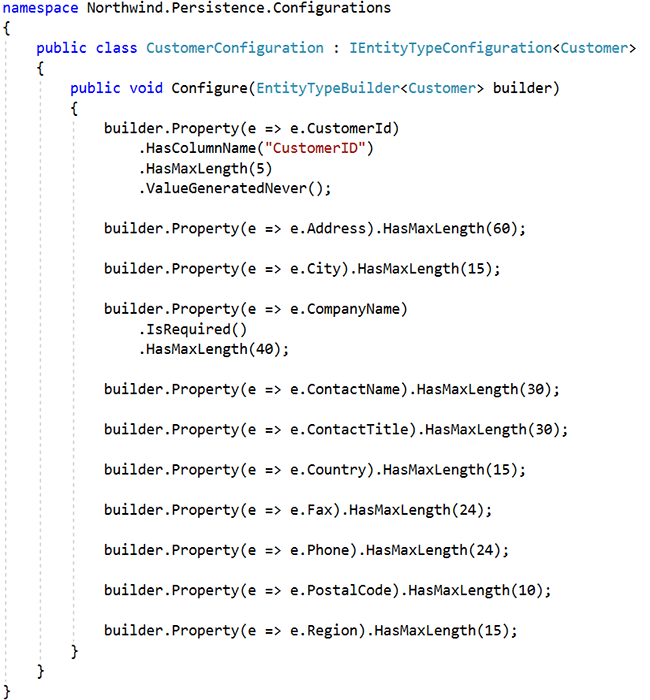
Good Example: Domain is lean, configuration for entity is contained within a separate configuration type This is a big improvement! Now the customer entity is lean, and the configuration can be added to the persistence layer, completely separate of the domain. Now the domain is independent of data access concerns.
Learn more about this approach by reading about self-contained configuration for code first.

Figure: Database implementation is a Infrastructure concern not a Domain concern It's common for business logic to be added directly to the presentation layer. When building ASP.NET MVC systems, this typically means that business logic is added to controllers as per the following example:
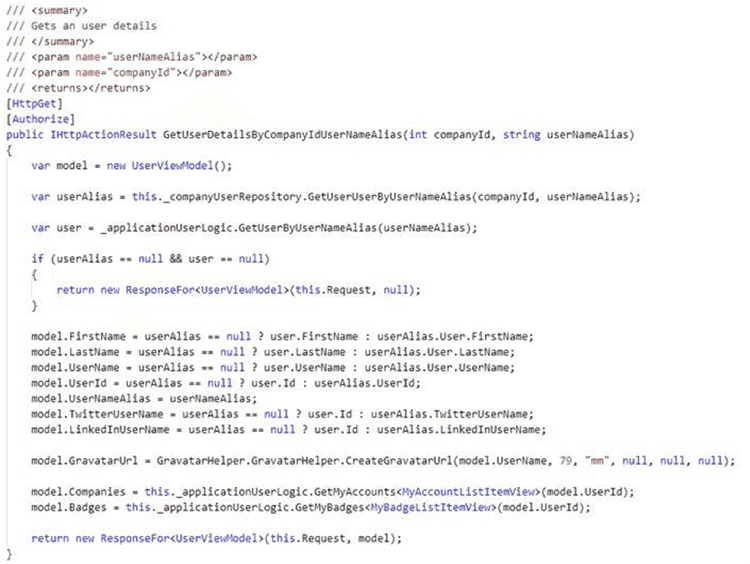
Figure: Bad example - Although this application clearly has repository and business logic layers, the logic that orchestrates these dependencies is in the ASP.NET Controller and is difficult to reuse The logic in the above controller cannot be reused, for example, by a new console application. This might be fine for trivial or small systems but would be a mistake for enterprise systems. It is important to ensure that logic such as this is independent of the UI so that the system will be easy to maintain now and well into the future. A great approach to solving this problem is to use the mediator pattern with CQRS.
CQRS stands for Command Query Responsibility Segregation. It's a pattern that I first heard described by Greg Young. At its heart is the notion that you can use a different model to update information than the model you use to read information...There's room for considerable variation here. The in-memory models may share the same database, in which case the database acts as the communication between the two models. However they may also use separate databases, effectively making the query-side's database into a real-time reporting database.Martin Fowler - https://martinfowler.com/bliki/CQRS.html
CQRS means clear separation between Commands (Write operations) and Queries (Read operations).CQRS can be used with complex architectures such as Event Sourcing but the concepts can also be applied to simpler applications with a single database.
MediatR is an open source .NET library by Jimmy Bogard that provides an elegant and powerful approach for writing CQRS, making it easier to write clean code.
For every command or query, you create a specific request class that explicitly defines the “input” required to invoke the operation.

Figure: (from MediatR docs) A Simple Request class Then the implementation of that command or query is implemented in a handler class. The handler class is instantiated by a Dependency Injection container – so can use any of the configured dependencies (Repositories, Entity Framework, services etc).

Figure: A handler class This approach brings many benefits:
- Each command or query represents an atomic, well-defined operation such as "Get My Order Details" (Query) or "Add Product X to My Order" (Command)
- In Web APIs, this encourages developers to keep logic out of controllers. The role of controllers becomes reduced to "Receive a request from the web and immediately dispatch to MediatR". This helps implement the "Thin controllers" rule. When logic is in a controller, the only way to invoke it is via web requests. Logic in a mediator handler can be invoked by any process that is able to build the appropriate request object, such as background workers, console programs or SignalR hubs
- Mediator also provides a simple pub/sub system allowing "side effects" to be explicitly implemented as additional, separate handlers. This is great for related or event-driven operations such as "Update the search index after a change to the product has been saved to database"
- Using a specific handler class for each operation means that there is a specific dependency configuration for each command or query
- Developers often implement interfaces and abstractions between the layers of their applications. Examples of this might include an IMessageService for sending emails or an IRepository interface to abstract database access. These techniques abstract specific external dependencies such as "How to save an order entity in the database" or "How to send an email message". We have witnessed many applications with clean, persistence-ignorant repository layers but then with messy spaghetti code on top for the actual business logic operations. MediatR commands and queries are better at abstracting and orchestrating higher-level operations such as "Complete my order" that may or may not use lower-level abstractions. Adopting MediatR encourages clean code from the top down and help developers "fall into the pit of success"
- Building even a simple app with this approach makes it easy to consider more advanced architectures such as event sourcing. You have clearly defined "What data can I get" and "What operations can I perform". You are then free to iterate on the best implementation to deliver the defined operations. MediatR handlers are easy to mock and unit test
- MediatR handlers are easy to mock and unit test
- The interface for MediatR handlers encourages the implementation of best-practice async methods with cancellation token support.
- MediatR introduces a pipeline behaviour system allowing custom to be injected around handler invocation. This is useful for implementing cross-cutting concerns such as logging, validation or caching
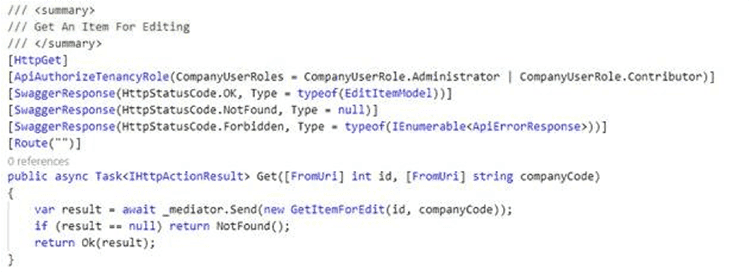
Figure: Good example - MediatR simplifies the dependencies injected into the controller. The incoming web request is simply mapped directly to a MediatR request that orchestrates all the logic for this operation. The implementation and dependencies needed to complete “GetItemForEdit” are free to change without needing to change the controller class When using MediatR within an ASP.NET Controller it is typical to see actions such as the following:

Figure: A Typical ASP.NET Controller using Mediator In the above example, the API contains a Create action that includes a CreateProductCommand parameter. This command is a request to create a new product, and the request is associated with an underlying request handler. The request is sent using MediatR with the method call _mediator.Send(command). MediatR will match the request to the associated request handler and return the response (if any). In a typical implementation, the request and request handler would be contained within separate files:
In the above implementation, the request handler is cleanly separated from the request. However, this separation results in reducing discoverability of the handler. For example, a developer looking at the action in this first figure might be interested in the logic behind the command. So, they press F12 to go to the definition and can see the request (CreateProductCommand), but not the logic since it is contained within the request handler (CreateProductCommandHandler). The developer must then navigate to the handler using Solution Explorer or some keyboard wizardry. This is assuming that the developer is familiar with the design, and knows that there is an underlying request handler that contains the logic of interest. We can avoid these problems and improve discoverability by instead using the following approach:
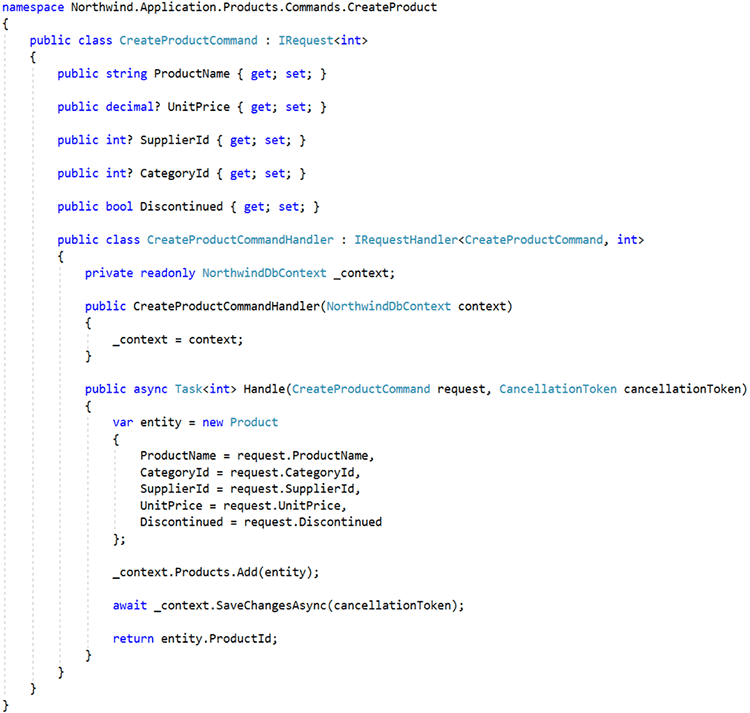
Figure: Good Example - Nesting the Request Handler within the Request Improves Discoverability of Command and Associated Command Logic In the above example the request handler is nested within the request, there by improving the discoverability of the command and associated command logic.
Data Transfer Objects (DTOs) and View Models (VMs) are similar concepts, but the terms are not interchangeable. To make matters more confusing the term
ViewModelhas a special meaning inside the MVVM pattern.Do you understand the subtle difference between these terms?
What is a DTO?
A DTO is a type that is used to move data from one part of an application to another. This could be between a command and a service, or between an API and a UI. Typically, a DTO represents an entity or other resource.
Unlike regular classes, a DTO only includes data - not behaviour.
public class CarDto { public int Id { get; set; } public int MakeId { get; set; } public string Make { get; set; } public int ModelId { get; set; } public string Model { get; set; } public int Year { get; set; } public bool IsInsurable() { return this.Year > DateTime.Now.AddYears(-25).Year; } }Bad example - A DTO that encapsulates data but also includes behaviour (or logic in this case)
public class CarDto { public int Id { get; set; } public int MakeId { get; set; } public string Make { get; set; } public int ModelId { get; set; } public string Model { get; set; } public int Year { get; set; } }Good example - A DTO that encapsulates some data
What is a view model?
A view model (vm) is also a DTO, but it's a special kind of DTO. Rather than return data that corresponds to an entity or resource, it returns data that corresponds to a view. A view in this case is typically some part of a UI; although a view model could also be used to return a data structure that corresponds to the specific requirements of any part of an application. The distinction is that it represents the needs of the consumer, rather than the structure defined by the source.
This can be useful in situations where you have full control of both the consumer and provider. In a full-stack application this means both the UI and the API. In this case, you might have well-defined requirements for a view in the UI. Let's use a sales dashboard as an example; rather than have the dashboard make multiple calls to the API (say for the salespeople's names, their monthly figures, their targets, etc.), you can define a view model that returns all of the required data in one call.
What is a ViewModel?
In the MVVM pattern, the term ViewModel (VM) (in PascalCase) has a special meaning. A ViewModel provides functionality and state for a view (in this case, this is explicitly part of a UI), and therefore must contain logic as well as data. It also provides state, and acts as the glue between the UI (the View) and the service layer (the Model).
Learn more about the above concepts in the following Weekly Dev Tips podcasts:
When building Web APIs, it is important to validate each request to ensure that it meets all expected pre-conditions. The system should process valid requests but return an error for any invalid requests. In the case of ASP.NET Controllers, such validation could be implemented as follows:
In the above example, model state validation is used to ensure the request is validated before it is sent using MediatR. I am sure you are wondering - why is this a bad example? Because in the case of creating products, we want to validate every request to create a product, not just those that come through the Web API. For example, if we're creating products using a console application that invokes the command directly, we need to ensure that those requests are valid too. So clearly the responsibility for validating requests does not belong within the Web API, but rather in a deeper layer, ideally just before the request is actioned.
One approach to solving this problem is to move validation to the Application layer, validate immediately before the request is executed. In the case of the above example, this could be implemented as follows:
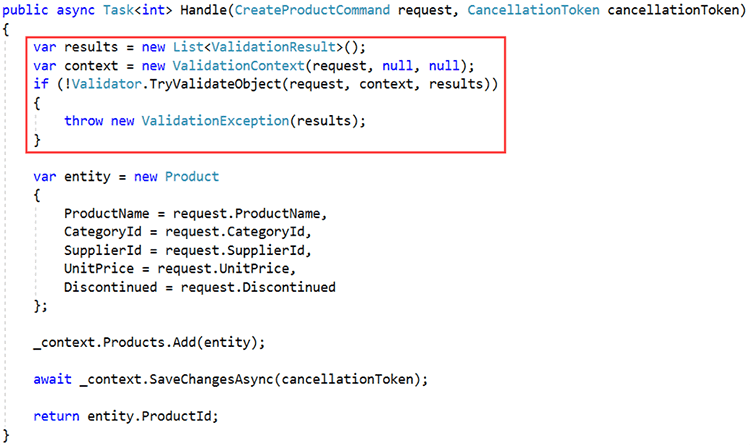
Figure: OK Example - Validation Handled Manually within Request Handler Ensuring All Requests are Validated The above implementation solves the problem. Whether the request originates from the Web API or a console app it will be validated before further processing occurs. However, the above code is boilerplate and will need to be repeated for each and every request that requires validation. And of course, it will only work if the developer remembers to include the validation check in the first place!
Fortunately, if you are following our recommendations and combining CQRS with MediatR you can solve this problem by incorporating the following behaviour into your MediatR pipeline:
This RequestValidationBehavior class will automatically validate all incoming requests and throw a ValidationException should the request be invalid. This is the best and easiest approach since existing requests, and new requests added later, will be automatically validated. This is possible through the power of MediatR pipeline behaviours. The documentation for MediatR includes a section on Behaviours; https://github.com/jbogard/MediatR/wiki/Behaviors. Review this documentation to understand how you can enhance your request handlers with behaviours and how to register pipeline behaviours.
The only step that remains is handle any validation exceptions. Within the console app, a try catch block will suffice. The action taken within the catch block will of course depend on requirements. Within the Web API, use an ExceptionFilterAttribute to catch these exceptions and convert them into a BadRequest result as follows:
When defining a domain, entities are created and consist of properties and methods. The properties represent the internal state of the entity and the methods are the actions that can be performed. The properties typically use primitive types such as strings, numbers, dates, and so on.
As an example, consider an AD account. An AD Account consists of a domain name and username, e.g. SSW\Jason. It is a string so using the string type makes sense. Or does it?
An AD Account is a complex type. Only certain strings are valid AD accounts. Sometimes you will want the string representation (SSW\Jason), sometimes you will need the domain name (SSW), and sometimes just the username (Jason). All of this requires logic and validation, and the logic and validation cannot be provided by the string primitive type. Clearly, what is required is a more complex type such as a value object.
The underlying implementation for the AdAccount class is as follows:
The AdAccount type is based on the ValueObject type.
Working with the AD accounts will now be easy. You can construct a new AdAccount with the factory method For as follows:

Figure: When use value The factory method For ensures only valid AD accounts can be constructed and for invalid AD account strings, exceptions are meaningful, i.e. AdAccountInvalidException rather than IndexOutOfRangeException .
Given an AdAccount named account, you can access:
- The domain name using; account.Domain
- The username using; account.Name
- The full account name using; account.ToString()
The value object also supports implicit and explicit conversion operators. You can:
- Implicitly convert from
AdAccount
to
string using; (string)account-
Explicitly convert from
stringto
AdAccount using; (AdAccount)"SSW\Jason"
If you're using Entity Framework Core, you should also configure the type as follows:
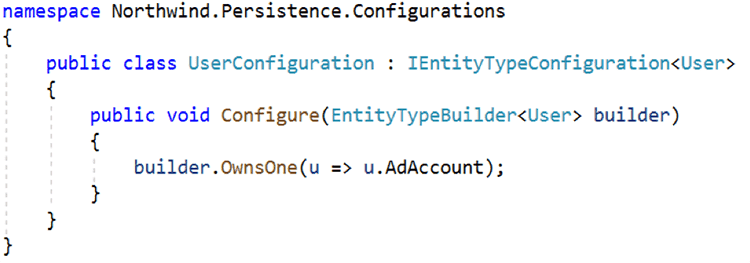
Figure: Using Entity Framework Core to Configure Value Objects as Owned Entity Types With the above configuration in place, EF Core will name the database columns for the properties of the owned entity type as AdAccount_Domain and AdAccount_Name. You can learn more about Owned Entity Types by reviewing the EF Core documentation.
Next time you are building an entity, consider carefully if the type you are defining is a primitive type or a complex type. Primitive types work well for storing simple state such as first name or order count, complex types work best when defining types that include complex logic or validation such as postal or email addresses. Using a value object to encapsulate logic and validation will simplify your overall design.
Developers often fall into the trap of using primitive types (
int,string,Guid) for entity identifiers when using Entity Framework (EF) because it is straight forward to simply add astringorintorGuidas theIDfield for an entity. The misuse of the primitive types lead to Primitive Obsession.Primitive Obsession refers to a code smell or anti-pattern where primitive data types (such as integers, strings, booleans, etc.) are excessively used to represent domain concepts, instead of creating dedicated classes to encapsulate those concepts.
Consider this example of Primitive Obsession:
public class Person { public Guid Id { get; set;} public string FirstName { get; set; } public string LastName { get; set; } public string EmailAddress { get; set; } /// ... more stuff } public class Customer { public Guid Id { get; set;} public string Name { get; set; } /// ... more stuff }The Guid
Idvalue of aPersonentity can easily be mistaken or used as the GuidIdvalue of aCustomerentity because there is no strong typing or encapsulation to prevent these two different entity ID types from being used interchangeably.Primitive Obsession can be witnessed on almost any domain concept, not just IDs (e.g. EmailAddress, PhoneNumber, Currency). To combat Primitive Obsession, we should consider creating meaningful and domain-specific classes to represent our concepts. By encapsulating related data and behavior into these classes, we can improve our code readability, maintainability, and flexibility. See Do you know when to use value objects? for examples of replacing data with Value Objects.
Using Strongly Typed IDs we can avoid the anti-pattern and clearly represent our domain entity specific identifiers.
Now with C# 9 (and later) we can use the
record(for one line declarations) or even therecord struct(for better performance - see below) type to declare strongly typed IDs very succinctly. Withrecords we no longer need to implement or override equality operators - they are automagically generated for us by the compiler.For example:
public readonly record struct PersonId(Guid Value); public readonly record struct CustomerId(Guid Value); public class Person : BaseEntity { public PersonId Id { get; set;} public string FirstName { get; set; } public string LastName { get; set; } public string EmailAddress { get; set; } /// ... more stuff } public class Customer : BaseEntity { public CustomerId Id { get; set;} public string Name { get; set; } /// ... more stuff }Viola! Now we have strongly typed IDs on our
PersonandCustomerentities and no way for anyone to get the values confused or misuse them.How do we configure EF to work with Strongly Typed IDs
To enable the correct serialization of Strongly Type IDs we need to add some configuration code to our EF Entities so that EF knows how to convert between the Primitive type and the Strongly Typed ID values.
Here is one way to specify the configuration:
public class PersonConfiguration : IEntityTypeConfiguration<Person> { public void Configure(EntityTypeBuilder<Person> builder) { // Primary Key builder.HasKey(e => e.Id); // Configuration for converting the `id` property To that will be stored in the database and From the primitive value (e.g. GUID, int, string) back into a strongly typed Id: builder.Property(e => e.Id) .HasConversion( // from Strong ID to Primitive value id => id.Value, // from Primitive value to Strong ID guidValue => new PersonId(guidValue)) // enable the primitive value to be auto-generated when adding (SaveChanges) new entities to the database (only works from EF Core 7 onwards) .ValueGeneratedOnAdd(); } }Another slightly cleaner looking approach could be to use a
ValueConverter:public class PersonConfiguration : IEntityTypeConfiguration<Person> { public void Configure(EntityTypeBuilder<Person> builder) { var converter = new ValueConverter<PersonId, Guid>( id => id.Value, guidValue => new PersonId(guid)); builder.HasKey(e => e.Id); builder.Property(e => e.Id) .HasConversion(converter) .ValueGeneratedOnAdd(); } }Check out the SSW Clean Architecture template for a few examples of Strongly Typed IDs in action.
Performance considerations
As mentioned earlier, we could use
recordorrecord structto succinctly describe our strongly typed IDs.However, when using
recordthere is a performance penalty we pay as pointed out by Dan Patrascu on his CodeWrinkles YouTube video Stop Using Records As Strongly Typed IDs!.Dan suggests to use
structorclassinstead because generating 10,000 strongly typed Ids is 4x faster compared to usingrecord.However,
classandstructare more verbose and require that we implement theEqualsandGetHashCodeoverrides manually!Dan unfortunately missed out a benchmark for
record struct. We wrote our own benchmark's similar to Dan's and as it turns outrecord structgives us the best of both worlds! We get the performance ofstructand the succinct one liner declarations ofrecordwithout needing to manually implement the equality checks.
Benchmark results of various StronglyTyped ID constructs Check out William Liebenberg's StronglyTypeIdsBenchmark repo on GitHub for the benchmark results.
Summary
To add strongly typed IDs to our Entity Framework Entities we can utilize the
record structand add some simple entity configuration code to convert between primitive and strong type values.It is worth noting that
record's are immutable by default, butrecord struct's are not :(We can regain the immutability by adding the
readonlymodifier to our strongly typed ID declaration. With thereadonlykeyword the compiler will give us the same warnings at build time when any unwanted mutation to the ID value is made (or attempted to be made).So the ultimate programming construct for Strongly Typed IDs is
readonly record struct.public readonly record struct UserId(Guid Value);Domain Events and Integration Events are a concept primarily found in Domain-Driven Design (DDD) that can be applied in various other architectural patterns such as Clean Architecture.
Domain Events and Integration Events are powerful patterns improve decoupling and facilitate communication between different components of an application. They serve as a means of notification for important domain concepts that have occurred.
In Clean Architecture, Domain Events can be employed to enhance the communication between the
Domainlayer and other outer layers, such as theApplicationlayer orInfrastructurelayer. By raising Domain Events within theDomainlayer, we achieve loose coupling between different parts of the application while ensuring that the domain layer remains independent of other concerns.For an example implementation of DDD Domain and Integration events with Clean Architecture, check out this example project.
Here's a brief overview of how Domain Events fit into Clean Architecture:
DomainLayer: The domain layer, as discussed earlier, contains the domain model and business logic. When a significant event occurs within the domain, the relevant domain entity can raise a domain event without being concerned about what happens next.ApplicationLayer: The application layer, which orchestrates the flow of the application, is responsible for subscribing to Domain Events raised by the domain layer. When a domain event is raised, the application layer can react to it by initiating additional processes or triggering other actions in response to the event.InfrastructureLayer: The infrastructure layer is responsible for implementing the actual event handling mechanisms. It provides the infrastructure to publish and subscribe to Domain Events, and it ensures that the events are properly handled and dispatched to interested parties, such as external systems or other services.What are Domain Events
Domain Events are an integral part of the Domain Model.
Domain Events are immutable and can be considered as historical facts capturing something that occurred in the Domain process. They are meant to be a representation of past events and cannot be altered or disputed.
Domain Events are raised within the
DomainLayer of your application when an entity or aggregate makes a significant decision or undergoes a state change. The main purpose of Domain Events is to enable loose coupling and keep domain logic isolated from the application's infrastructure.For example, when an
Orderis placed, a domain event can be raised (e.g.OrderReceivedEvent) to notify other parts of the domain that need to react to this event, such as updating inventory or sending confirmation emails.Another example could be when the
Order'sStatuschanges fromOrderStatus.ReceivedtoOrderStatus.Processing, we can publish anOrderStatusChangedevent.Domain Events should not depend on external dependencies or external systems, adhering to the principles of the Domain Layer.
When publishing a domain event, the entire Entity or Aggregate can be included since the event's scope is confined to the current bounded context.
It is important to remember that the definition and behavior of a
Productin one bounded context might differ from another bounded context, like an e-commerce application product versus the product of a chemical reaction in a laboratory.In the
ApplicationLayer, Domain Events are typically in-process of the application. Any database side-effects are tracked as part of the current transaction of the original request, ensuring strong consistency in the response sent back to the user once the transaction is committed.What are Integration Events
Integration Events are used for communication between different bounded contexts (or microservices in a distributed system) and enable potentially long-running asynchronous operations like sending a large number of emails, generating thumbnail images, or performing additional business logic.
It is recommended that Integration Events should only be raised from the
Applicationlayer when the need for communication or coordination between different parts of the application arises. For example, after a specific use case (command / query) is handled successfully, theApplicationlayer might raise an Integration Event to notify other microservices or external systems about the outcome of that use case.If there is a strict domain requirement for Integration Events to be raised from the
Domainlayer then you need to be aware that you may inadvertently introduce coupling between domain logic and infrastructure concerns which could lead to violating one of the core principles of Clean Architecture (Dependency Inversion Principle)Integration Events are published after the original transaction completes and are typically dispatched through a Message Broker or Event Bus (e.g., Azure Service Bus, RabbitMQ, Redis PubSub, Dapr PubSub). To ensure reliability and consistency, systems often implement mechanisms like a Transactional Outbox.
Naming Events
When describing Domain or Integration Events, we commonly use a past-tense naming convention, such as
OrderCreated,UserRegistered,InvoiceConsolidated.It's essential to identify suitable events as not everything qualifies as an important event. For instance, "client walked into the store" or "chicken crossed the road" may not be appropriate for a Domain Event.
When to use Domain vs Integration Events
Use Domain Events within the
Domainlayer to decouple domain-specific logic and enable better maintainability and testability within the core of your application.Use Integration Events (preferably from the
Applicationlayer) when you need to communicate and coordinate between different parts of an application or distributed system (such as microservices), to achieve eventual consistency and loose coupling among services.The goal of a modern complex software project is to build software with the best software architecture and great cloud architecture. Software developers should be focusing on good code and good software architecture. Azure and AWS are big beasts and it should be a specialist responsibility.
Many projects for budget reasons, have the lead developer making cloud choices. This runs the risk of choosing the wrong services and baking in bad architecture. The associated code is hard and expensive to change, and also the monthly bill can be higher than needed.
The focus must be to build solid foundations and a rock-solid API. The reality is even 1 day of a Cloud Architect at the beginning of a project, can save $100K later on.
2 strong developers (say Solution Architect and Software Developer)
No Cloud Architect
No SpendOpsFigure: Bad example of a team for a new project
2 strong developers (say Solution Architect and Software Developer)
+ 1 Cloud Architect (say 1 day per week, or 1 day per fortnight, or even 1 day per month) after choosing the correct services, then looks after the 3 horsemen:- Load/Performance Testing
- Security choices
- SpendOps
Figure: Good example of a team for a new project
Problems that can happen without a Cloud Architect:
- Wrong tech chosen e.g. nobody wants to accidentally build and need to throw away
- Wrong DevOps e.g. using plain old ARM templates that are not easy to maintain
- Wrong Data story e.g. defaulting to SQL Server, rather than investigating other data options
- Wrong Compute model e.g. Choosing a fixed price, always-on, slow scaling WebAPI for sites that have unpredictable and large bursts of traffic
- Security e.g. this word should be enough
- Load/Performance e.g. not getting the performance to $ spend ratio right
Finally, at the end of a project, you should go through a "Go-Live Audit". The Cloud Architect should review and sign off that the project is good to go. They mostly check the 3 horsemen (load, security, and cost).
